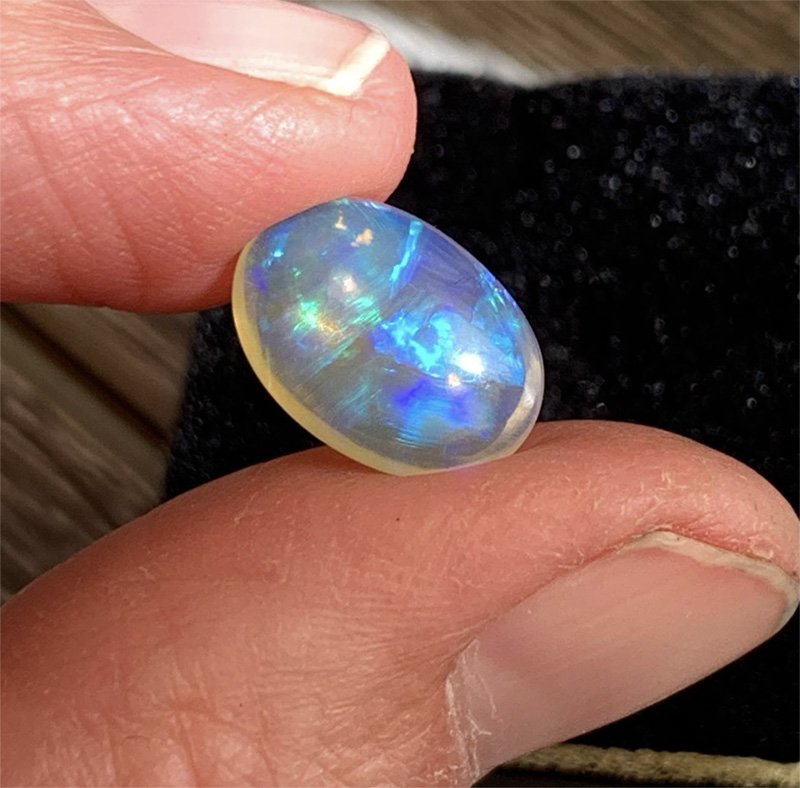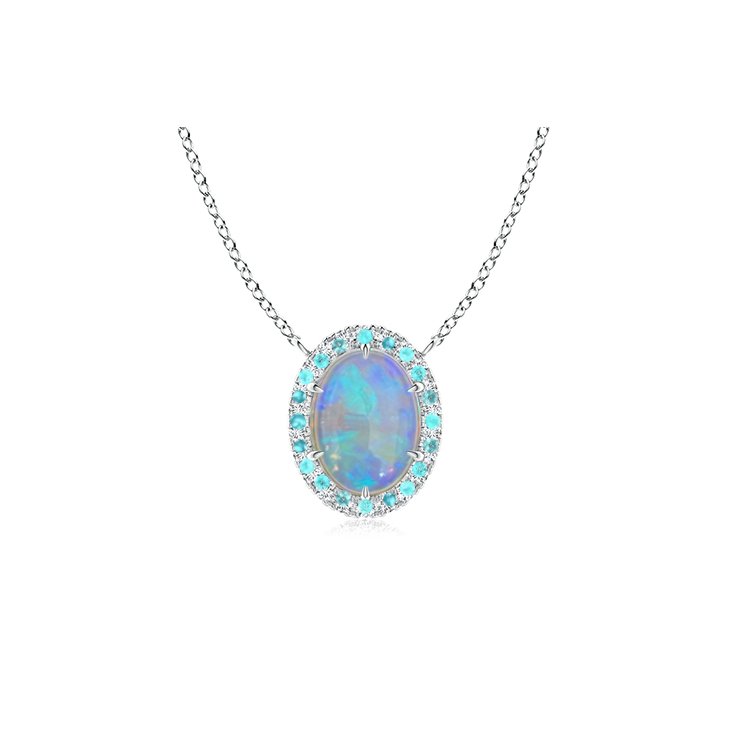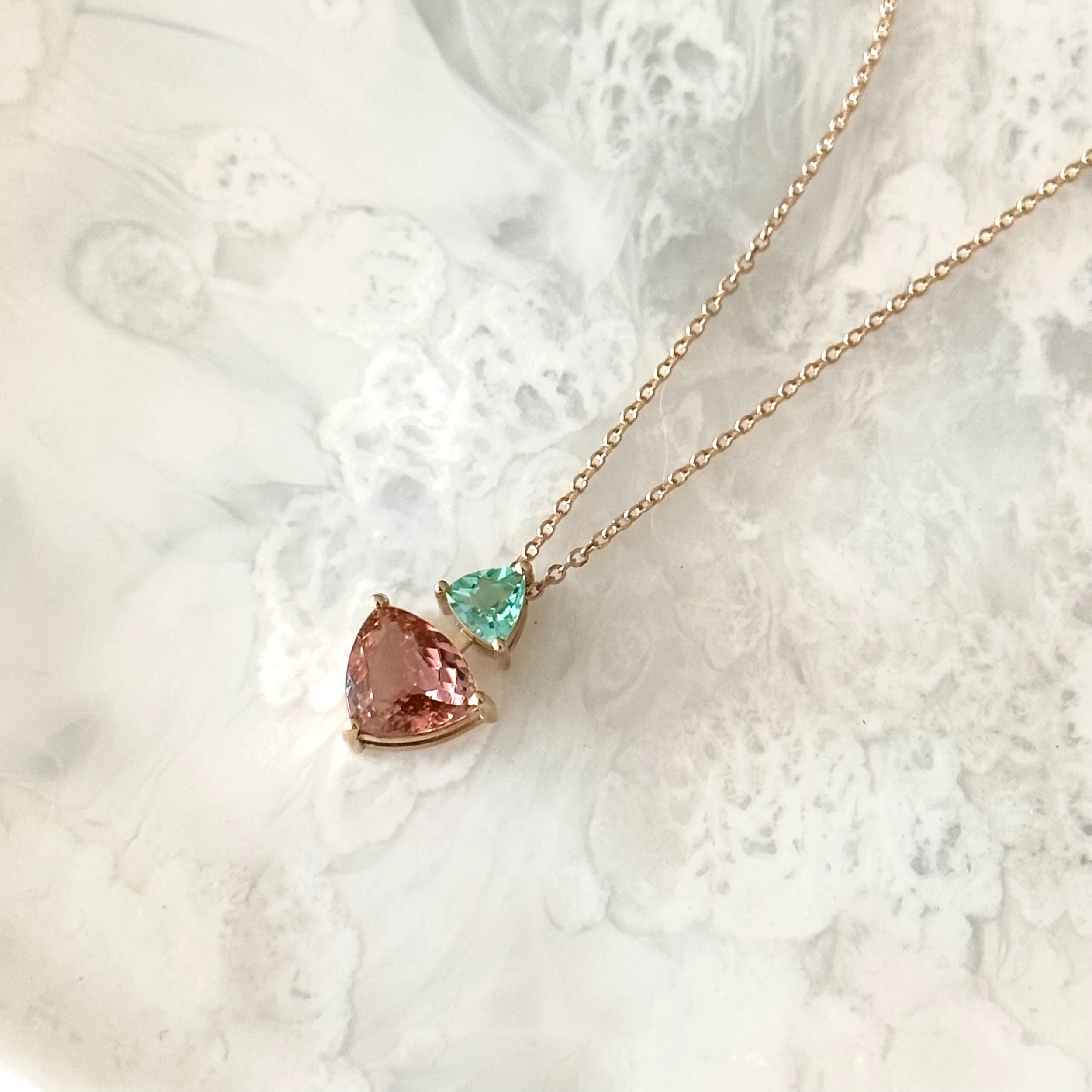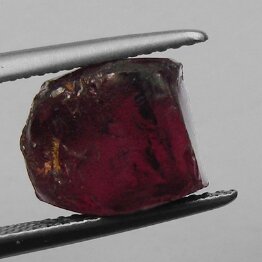Caring for Opals
Different type of opals require different care. Before deciding how to best care for your opal you need to be aware of the type of opal you have;
Doublets – Doublet opals are made of two layers: a thin slice of opal and a black backing. The slice of opal is glued to the backing in order to enhance the colour.
Triplets – Similar to a doublet, triplets have a third transparent layer on the top (normally quartz or glass) to protect the opal and give it a rounder shape.
Solid Opal – Natural solid opal which has only been cut and polished.
Solid Opals – Opal is a soft stone, approximately the same hardness as glass (around 6.5 on Moh’s hardness scale), so it is important to treat your opal carefully in order to avoid damaging it. Remove your opal jewellery if there is a chance it will be scratched or broken (i.e. working in the garden, moving furniture, etc.)
Many people believe solid opals can be damaged by water – however, this only applies to doublets and triplets. Solid opals are actually fine in water. In fact, most precious opals contain about 5-6% water. Opals could crack if they are subjected to very dry conditions (eg the zero humidity in a safe or bank vault) or rapid changes in temperature, so try to avoid very high temperatures such as boiling or icy water.
Doublets & Triplets – Caring for doublets or triplets is a little different to caring for solid opals. Because doublets and triplets consist of multiple layers glued together, prolonged exposure to water will eventually cause lifting between the layers and water will get in. A doublet or triplet will take on a foggy appearance if this happens. Your opal wont necessarily be ruined if it gets wet once or twice. But repeated or prolonged exposure to moisture will cause water damage to a doublet or triplet.
Cleaning your opal
Solid opal should be cleaned gently with mild detergent in warm water and a very soft toothbrush or cloth. Avoid bleach, chemicals and cleaners. Doublets & triplets may be wiped with a soft cloth and mild detergent, but should never be soaked or immersed.
Never clean your opal in an ultrasonic cleaner, as the intense vibrations may cause cracking in a solid opal, and water penetration in a doublet or triplet.
If your opal has surface scratches, there is the option of professional re-polishing, so give it a smoother finish.
Storing your opal
If you need to store your opal away for a period of time, simply place it in a padded cloth bag in your jewellery box. For longer storage periods, place your opal in cotton wool with a few drops of water, then into a sealed plastic bag just to be safe. The water is not intended to soak into the stone (as opal is impervious) but will prevent water coming out of the stone if it is exposed to very low humidity environments (for example, zero humidity storage safes).
































